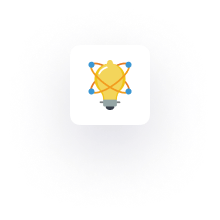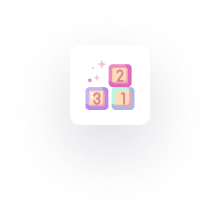Choosing a programming language can be a challenging decision, especially for beginners or those transitioning into the tech industry.
There are several factors to weigh, including job opportunities, ease of learning, and long-term career growth.
Once you’ve settled on a language, you’ll still need to make further decisions based on the specific industry or domain you're targeting, such as the language’s niche use, learning curve, and versatility across different types of projects.
Project niche: Every programming language has its strengths, but some are more suitable for specific use cases. For example, while you can build web applications, data pipelines, or automation tools in most languages, Python often outperforms others in terms of development speed and flexibility. Always assess the unique needs of your project, such as performance, scalability, and integration support, before making your choice.
Difficulty in Learning: If you’re a beginner or learning on a tight schedule, start with a language that’s known for its readability and beginner-friendliness. Python is widely recognized as one of the easiest programming languages to learn, thanks to its clean syntax and human-readable code. This helps you focus on building real-world projects rather than getting stuck on syntax.
Versatility: In today’s technological ecosystem, where artificial intelligence (AI), data science, and automation are in high demand, learning a versatile language like Python opens up a wide range of career paths. Python is used in backend development, machine learning, data analytics, web development, and more. It also has a large and active developer community, which means there are abundant resources, libraries, and frameworks to support your growth.
What is Backend Development
Backend development involves building and maintaining the technology that powers the logic, database interactions, authentication, and server operations of web software applications. It’s the engine, also called the server, that processes requests, handles data, and ensures that everything on the frontend (what the user sees) works as expected.
While the frontend is responsible for the user interface and experience, the backend is responsible for:
Business logic: How the application behaves, what happens when a user logs in, submits a form, or makes a purchase.
Databases: Storing, retrieving, and managing data (e.g., users, posts, transactions).
Authentication & Authorization: Verifying user identities and controlling access to resources.
Server Configuration: Managing the infrastructure that runs the application.
APIs: Providing interfaces for the frontend (or other services) to communicate with the backend.
To become a backend developer, here's a detailed step-by-step guide on becoming a backend developer.
What Does a Python Backend Developer Do?
A Python backend developer is responsible for building and maintaining the server-side logic of web applications. Their work ensures that the frontend communicates seamlessly with the server, databases, and other systems.
Key responsibilities include:
Writing server-side logic and application architecture
Managing and querying databases
Building and integrating RESTful APIs
Implementing security and authentication systems
Handling deployment and understanding DevOps fundamentals
Skills You Need to Learn
To become a proficient backend developer using Python, here’s a structured skill set to focus on:
Python Fundamentals
Data types, control structures, loops and functions,
Data Structures(lists, set, tuples and dictionaries)
Object Oriented Programming
Python modules and Packages
Web Development Basics
HTML: Structure of web pages
CSS: Styling and layout
JavaScript: Basic interactivity (to better understand frontend integration)
Version Control (Git)
GitHub for collaboration
Core networking principles: HTTP
HTTP Request methods
HTTP status codes
Advanced Python Concepts
Python Multithreading
Lambda functions
Generators
Decorators
Web Frameworks
Flask (Lightweight)
FastAPI(Performative)
Django (Frontend and Backend)
Databases and ORMs
SQL (PostgreSQL, MySQL)
ORMs (Django ORM, SQLAlchemy)
NoSQL (MongoDB)
Redis
APIs
RESTful APIs
JSON APIs
GraphQL (optional)
Security: Authentication & Authorization
JWT, OAuth
Session vs token-based auth
API security
Hashing and Encryption
Testing
Unit testing(unittest, pytest)
API Testing
Integration testing
Containerization and Deployment
Basics of Linux and the command line
Hosting (Heroku, Railway, Vercel for FastAPI)
Docker
Kubernetes
Continuous Integration and Deployment(CI/CD)
CI/CD concepts
Setting up pipelines
Best practices
Tools & Technologies
IDE (Pycharm, Visual Studio Code, Spyder, JetBrains etc)
Postman, Swagger for API testing
Docker
Virtual environments (
venv,pipenv)Linters and formatters (
black,flake8)
Project Ideas to Build a Portfolio
Online marketplace API
Chat API
E-commerce Platform
Dating App API
Additionally, you can select from the list of 100+ backend projects you can start building now to boost your portfolio and increase your chances of landing a Java backend role.
Want to get started immediately?
Here’s an all-in-one course that teaches you all the concepts outlined in this roadmap and even more. All-in-one Python course for learning backend engineering with Python. This comprehensive course is designed for Python developers seeking proficiency in Python.

Join the course:
Click here to become a Python Backend Developer now.
Resources
Here are some top-rated and beginner-friendly resources to learn Python backend development:
Conclusion
This roadmap highlights the necessary concepts to make your journey to becoming a Backend developer easier. Becoming a backend developer is not a 6-month journey but a marathon, where you need to learn concepts and apply them. Joining communities on Reddit, Discord, and Slack can facilitate your journey as a Backend developer through collaboration and mentorship.




